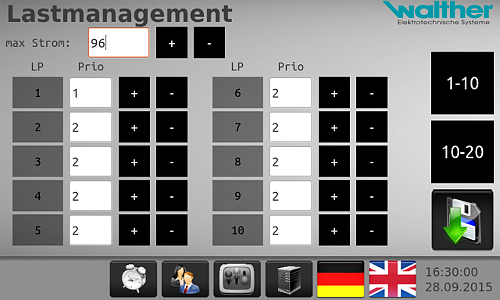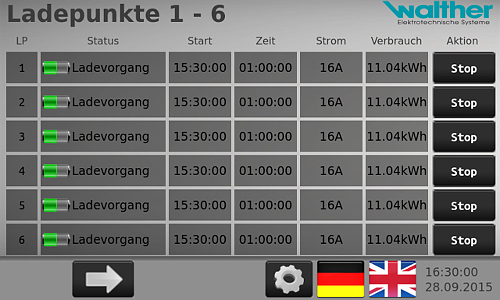Load management in charging infrastructure systems
The charging infrastructure should be more than just visually appealing. It must most of all facilitate the establishment of intelligent charging systems with flexible functionality. From the optimised adaptation of feed-in power options available and informative monitoring of the charging process, coupled with modern identification and cross-system settlement methods, through to highly efficient energy management systems.
Solutions for local energy management (LEM) are usually considered if there is a difference between the feed-in power and the charging power required. However with system extensions or the intelligent integration of other sources of energy, such as battery stores, photovoltaic systems or district heating plants, load management systems are also used as well as to avoid load peaks for cost reduction.
Fleet charging with load management (LEM)
Local energy management (LEM) regulates the charging currents of all connected vehicles. The total consumption of the charging system is ideally adapted automatically to the specified conditions. The orientation points of the LEM are the system's maximum charging capacity, the maximum charging capacity of the vehicles and the charging cable's maximum current-carrying capacity.

Parameterisation of load management
The system's maximum charging capacity is parameterised by the installer and/or operator or specified externally as a management parameter and determines the current amount of feed-in power available for energy management. Depending on the LEM parameterisation, even distribution or priority management can be specified at 4 levels.

Preselection system
The WALTHER preselection system goes one step further. A WALTHER front-end scans and evaluates the system status and then adapts the charging currents and phase distribution according to the results. The preselection system is extremely useful for status optimisation, since with each new vehicle that arrives it assigns it using the matching charge protection of the system's currently least-used phase and therefore avoids the problem of grid asymmetries with single-phase chargers.
